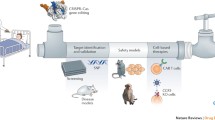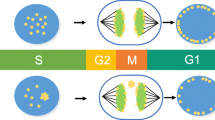Abstract
Cancer, including genitourinary malignancy, is a consequence of accumulated genetic aberrations in genes involved in crucial regulatory pathways. The result is a deregulation of cellular behaviour, leading to neoplastic transformation, uncontrolled cell proliferation and acquisition of metastatic ability. The development and perfection of techniques in the field of recombinant DNA technology, gene cloning, (differential) analysis of gene expression, and sequencing of genes and proteins have provided a wealth of information about the genetic aberrations associated with cancer development. This “recombinant DNA and gene cloning” technology and the recently developed DNA chip technology may provide new molecular diagnostic tools. Furthermore, the technology of gene cloning in combination with the progress in in vivo gene delivery techniques offers new treatment modalities, like gene therapy, additional to conventional therapies. This review is intended to provide a general introduction to the fundamentals or strategies of recombinant DNA and gene cloning techniques as a basis for understanding the rapidly expanding range of new diagnostic and therapeutic opportunities. Some illustrative examples are provided, addressing basic and biomedical research and possible clinical applications in genitourinary oncology.
Similar content being viewed by others
Author information
Authors and Affiliations
Additional information
Received: 16 March 1998 / Accepted 29 July 1998
Rights and permissions
About this article
Cite this article
Schamhart, D., Westerhof, A. Strategies for gene cloning. Urological Research 27, 83–96 (1999). https://doi.org/10.1007/s002400050093
Published:
Issue Date:
DOI: https://doi.org/10.1007/s002400050093




